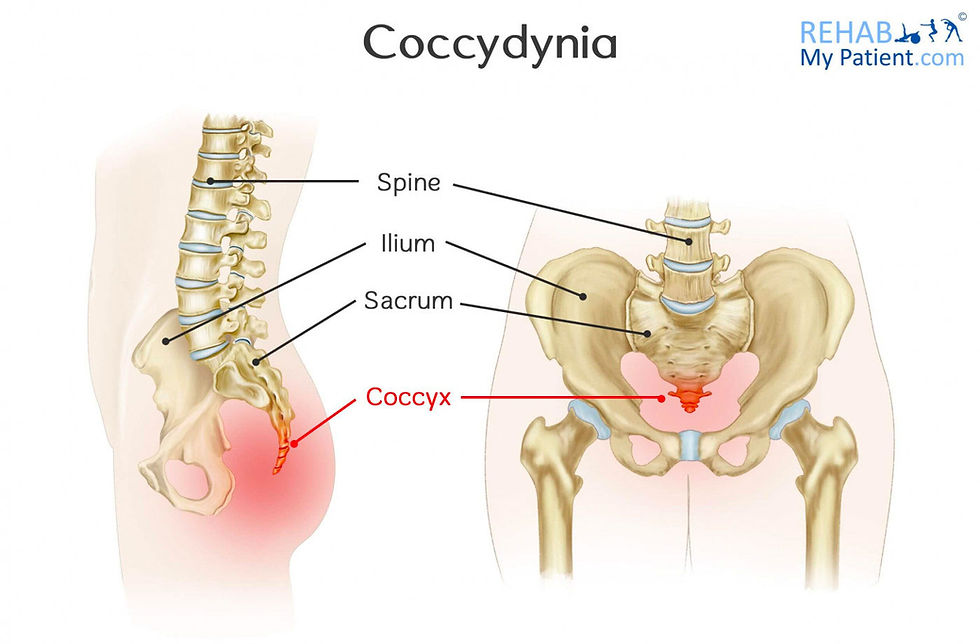Tailbone Pain During Pregnancy
- Kristen Zumberger DC, FIAMA
- Aug 10, 2022
- 2 min read
What is it?
Approximately one-third of pregnant women experience pain in the tailbone. The tailbone, also known as your coccyx, sits at the bottom of the spine and behind your uterus. It serves as an attachment point for the pelvic floor. This can be a common area of discomfort during pregnancy due to this.

Tailbone pain is often caused by the pelvic ligaments loosening and shifting. The hormone relaxin, released during pregnancy, causes the pelvic ligaments to become more flexible and loose. This can cause tighter contraction of the pelvic floor muscles, which help stabilize the body. The pelvic floor muscles are connected to the tailbone, leading to pain.
As your uterus expands with a growing baby, your center of balance is altered and your posture shifts, adding pressure in the low-back and tailbone, which typically aren't used to that amount of weight-bearing pressure.
Tailbone pain is more common in the late second trimester and third trimester. There is a tendency to slump forward while pregnant, but that can take a toll on your spine. Balance and symmetry are important during pregnancy. Sitting posture also plays a role in tailbone discomfort. When we sit we tend to sit rolled back on our tailbone or sacrum instead of our sit bones which can cause increased pressure to the tailbone and create pain.There is also scenarios where direct pressure can be placed on our tailbone from the growing baby and placenta.
Symptoms of tailbone pain can range from a dull ache to sharp, stabbing, or shooting pains in the lower back or buttock. The area around the tailbone is usually very tender and causes pain when sitting or getting up from a sitting position.
Treatment
Pelvic floor physical therapy and chiropractic will help with tailbone pain by focusing on reducing muscle tension while gaining muscle strength.Correcting instability with specific exercises can help reduce the pain. Your treatment plan should include stretches and breathing exercises.
Chiropractic adjustments to the pelvis and lower back can help decrease asymmetry and imbalances and take excess pressure off of the tailbone. Manual release of muscles supporting the pelvis and tailbone will be done to release tension.
Some things that you can do to keep balance and symmetry include not crossing legs when sitting, step out of bed with one leg, or standing on one leg to put pants on. These asymmetrical movements can increase the risk of tailbone pain.
Things you can do at home right now!
You may take some pressure off your tailbone with a special seat cushion. A wedge-shaped cushion with a cutout for the tailbone is highly recommended. An extra pillow between your legs will allow for a more neutral position for the knees and hips while sleeping.
The tailbone and rectum are very close in proximity and with pregnancy hormones it can increase your risk for constipation. Drinking lots of water, staying active, and eating foods with high fibers can help eliminate that pain. Wearing a maternity support belt may help relieve some pressure on the lower back and belly.

Being mindful of postures when standing and sitting will help decrease discomfort. When standing, focus on stacking the chest and avoid over arching your back. When sitting, focus on sitting forward on the sit bones. While sleeping use a pillow between the knees.

Comments